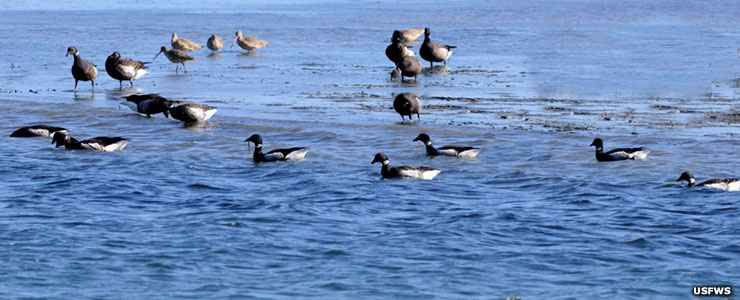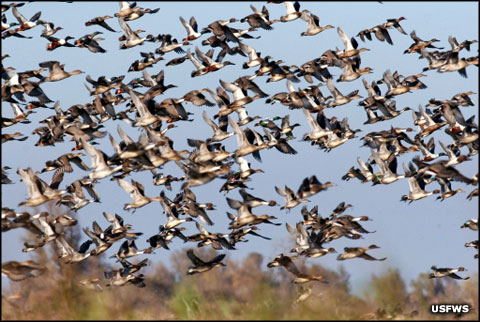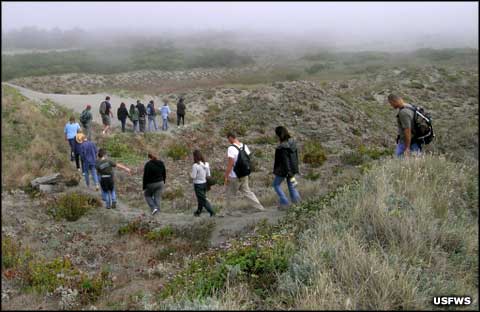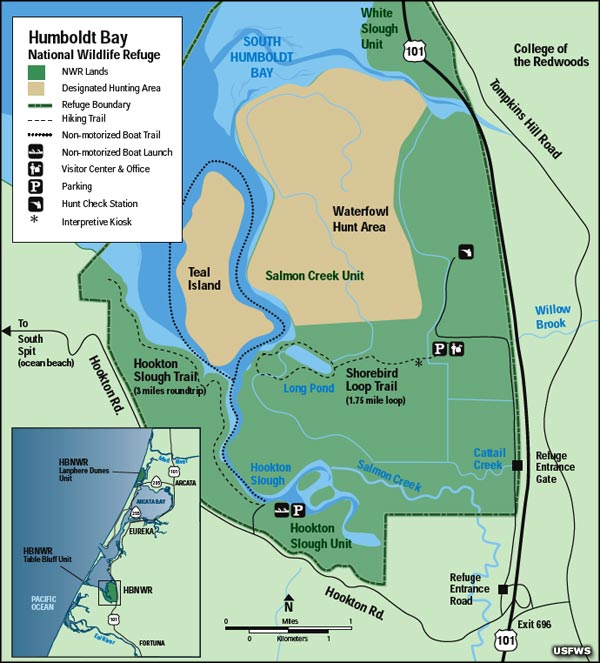Humboldt Bay National Wildlife Refuge

Brant in the water at Humboldt Bay National Wildlife Refuge
Humboldt Bay National Wildlife Refuge is a 4,000-acre property on the northern California coast near the cities of Eureka and Arcata. The refuge serves as a welcome stopover spot in the Pacific flyway. In migration seasons, tens of thousands of ducks, geese, swans, shorebirds and black brant spend some time in the wetland habitats that make up most of the property. More than 200 species of birds, including at least 80 species of water birds and 4 endangered species, stop to eat, rest and/or nest, either on the grounds of Humboldt Bay National Wildlife Refuge or on the lands around. One major reason for this is that Humboldt Bay provides prime habitat for almost 100 species of fish, 41 of which are classified as either sport or commercial fish.

Mixed flock of waterfowl above Humboldt Bay National Wildlife Refuge
Humboldt Bay National Wildlife Refuge was established in 1971 to preserve and protect critical habitat for the incredible diversity of fish, mammals, amphibians, birds, invertebrates and plants that live in the general Humboldt Bay area. The refuge has eight different habitats defined by their primary characteristic: saltmarsh, estuarine eelgrass meadows, brackish marsh, mudflats, riparian wetlands, seasonally flooded freshwater wetlands, coastal dunes, streams and forest. More than 260 species of birds and 50 species of mammals have been documented in the Humboldt Bay area. It's that number of different species and volume of actual birds, fish and mammals that make Humboldt Bay recognized as an internationally significant area for migratory birds.
Like Castle Rock National Wildlife Refuge and the Lanphere Dunes Unit, Humboldt Bay National Wildlife Refuge is administered as part of the Humboldt Bay National Wildlife Refuge Complex. The Richard J. Guadagno Headquarters and Visitor Center is located on the Salmon Creek Unit and except for Federal holidays, is open daily from 8 am to 5 pm. The Visitor Center offers several stunning dioramas in its exhibit space and has a beautiful observation room equipped with telescopes. Near the Visitor Center is the 1.7 mile-long Shorebird Loop Trail, a gravel and packed dirt loop trail that offers excellent wildlife viewing and photography opportunities with interpretive panels, an observation kiosk and a wetland observation deck. Best time to come to see wildlife: November through March.

School class field trip to Humboldt Bay National Wildlife Refuge

Photos and map courtesy of the US Fish & Wildlife Service